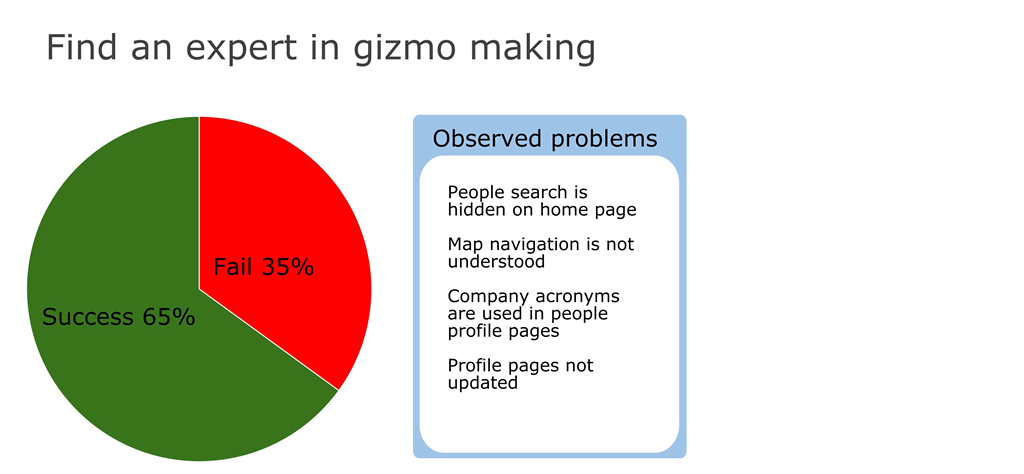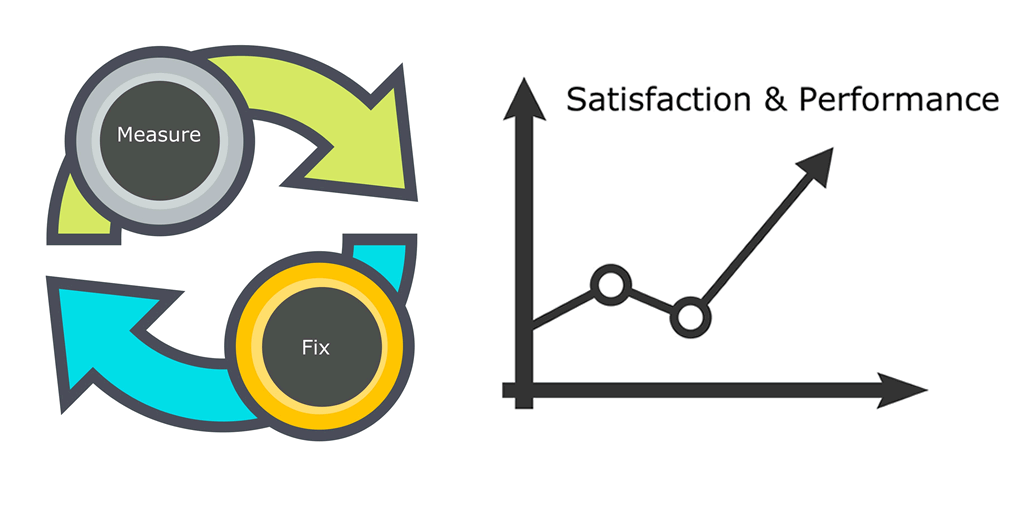Nothing beats watching people for measuring performance
To make sure your intranet, or digital workplace, meets people’s needs you should monitor and report on use and performance. Every intranet team I’ve worked with measured performance in one way or another. Focus on performance tends to be sharpest when a new intranet is developed or a new design commissioned. Satisfactory performance during this period is about the delivery of all the functionality that was specified, and checking that all the features work as specified. High performance is signalled by on time and on budget.
Measuring performance changes once the project is ‘delivered’ and all the functionality is in place. There is a shift away from measuring functionality to measuring satisfaction and use. Surveys are deployed and page view statistics are reported.
The problem with both types of measurement is that they don’t lead directly to fixing what’s broken. People use your intranet to get stuff done; make their targets; reduce time spent on admin; respond to customers; get home early. Observing employees trying to do these things, noting how often they succeed and what goes wrong is the most powerful way of measuring performance.
It’s not restricted to transaction type tasks (e.g. order new work uniform; book a meeting room) although these are good to measure. Success measurement works as long as you have an observable task that is representative of the overall aim of what you are trying to measure. For example, increasing collaboration is often a stated aim for intranets. Collaboration measures can be complex and abstract but measuring behaviours that are core to collaboration is not so hard.
Finding people is undoubtedly the heart of collaboration; if you can’t find the expert on ‘gizmo production’ then you can’t work with her can you? So you observe people trying to find unknown people on your intranet. Can they locate them? What search terms work? How do they go about it? How many give up? Measuring this micro task gives an indicator of the performance of your intranet against the macro task of collaboration.
Measuring in this way produces a performance triple whammy:
First, it gives you a tangible, unambiguous, direct indicator of performance – how many people could accomplish the task. This is a very compelling and simple signifier.

Second, you can see what is going wrong and note the problems.

Third, armed with your observations you can make plans to fix specific matters that impeded people’s progress.

With the correct buy-in this can lead to very productive improvement work. You can find yourself in a virtuous circle, driving up performance and satisfaction.

People may fail on your intranet, give up in frustration, and call IT or HR (or you) instead. Or they might be speeding seamlessly through tasks and getting work done.
The point is you won’t know unless you watch them.